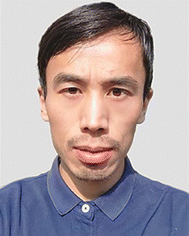Materials Horizons Emerging Investigator Series: Professor Zhengbao Yang, Hong Kong University of Science and Technology
Abstract
Our Emerging Investigator Series features exceptional work by early-career researchers working in the field of materials science.
Dr Yang received his bachelor's degree from the Harbin Institute of Technology, and his PhD degree from the University of Toronto in 2016. He is now an associate professor at the Hong Kong University of Science and Technology, affiliated with the Department of Mechanical and Aerospace Engineering. He has applied for 22 patents in China and the USA, and authored over 120 academic articles in high-impact journals such as Nature, Nature Comm., Science Robotics, Science Advances, Joule, EES, etc. Dr Yang is a IEEE Senior Member and has been listed as one of the “Top 2% Scientists in the world” by Stanford University. His research interests are Vibration and Mechatronics, with a special focus on developing smart structures and dynamic systems for energy harvesters, sensors, and actuators. This interdisciplinary research area requires combining knowledge and skills in mechanical design, electrical circuits, smart materials, and dynamic analysis. More information can be found at https://scholar.google.com.hk/citations?user=Rzm9F9IAAAAJ&hl=en.
Read Professor Zhengbao Yang's Emerging Investigator Series article ‘Exploring the Mpemba effect: a universal ice pressing enables porous ceramics’ ( https://doi.org/10.1039/D3MH01869E ) and read more about him in the interview below:
MH: Your recent Materials Horizons Communication presents “a technique of “ice and fire”, that is, water freezing (ice pressing) and high-temperature sintering (fire), to produce ideal porous piezoceramics”. How has your research evolved from your first article to this most recent article and where do you see your research going in future?
ZY: This is a fun story. My research group actually focuses on developing piezoelectric materials. As we all know, ceramics fabrication always needs a high-temperature sintering process. Basically it is fire. Then several years ago before the COVID pandemic, Game of Thrones, fantasy drama television series was very popular worldwide, and also in our lab. It is a song of ice and fire. So that inspired us. How about we create a song of ice and fire for our functional materials? It will be very cool.
Yes, that is the starting point. We actually have tried many wild ideas for years, and developed this new technique last year. Using it, we can fabricate globally porous and locally compact structural and functional ceramics.
Where do you see your research going in the future?
I will keep working on piezoelectric materials. Borrowing the great imagination and fantasy from art and literature, I hope our lab can create more “fun” stuff.
MH: What aspect of your work are you most excited about at the moment?
ZY: Now our research group has about 20 PhD students and Postdocs. Everyone works on unique and novel ideas. I am excited about all these new explorations. If I have to pick up the most exciting one, I think maybe the idea of creating an acoustic energy harvesting system implanted in the human body. This idea combines knowledge and skills in mechanical engineering, electrical engineering, biomedical engineering, mechanics, and material science. It potentially will promote the rapid development of implantable medical devices.
MH: In your opinion, what are the most important questions to be asked/answered in this field of research?
ZY: We are in the engineering domain, more especially in the manufacturing aspect. So the most important question to be answered will always be new manufacturing technologies can fabricate something that cannot be fabricated or the existing fabrication process is extremely costly and/or labour-intensive.
In our last group meeting, we had a heated discussion that may fit to this question very well. In the past decades, we have witnessed the booming of 3d printers. It is way different from traditional machines and has evolved to be capable of many different materials. Then the question is what is the next “3D printing”?
MH: What do you find most challenging about your research?
ZY: To be honest, the most challenging things are research funding. I think many scholars, either in the USA or China, share the same views as me. It becomes more and more challenging to obtain research funding. The competition is very severe and sometimes crucial. The majority of my time is on research proposals. We are looking for more healthy and sustainable research funding policies.
MH: In which upcoming conferences or events may our readers meet you?
ZY: I often attend IEEE conferences. I hope to attend more RSC conferences in the future.
It is always great to meet new colleagues and new ideas.
MH: How do you spend your spare time?
ZY: I like cooking, hiking and running. Hong Kong has many beautiful hiking trails. I often go hiking with my students and family on holidays.
MH: Can you share one piece of career-related advice or wisdom with other early career scientists?
ZY: I have no wisdom. Lol… I often watch online seminar records by Nobel laureates and famous senior professors in and beyond my research areas. I personally benefit a lot from this hobby. Sometimes I am down in the dumps; these seminars and these great minds motivated me.
Citing from Prof Goodenough, the oldest Nobel laureate, “dialogue, dialogue is always very important”.
| This journal is © The Royal Society of Chemistry 2024 |

